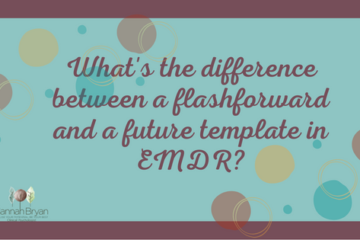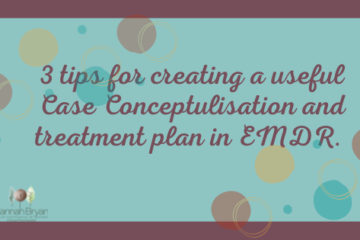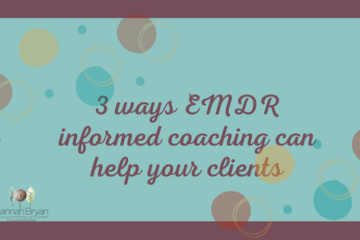It’s hard to spot those moments in our therapy sessions when we might use a cognitive interweave in EMDR. These are used to help our clients move on with their processing. So in this blog we think about when to use interweaves and why we might use them. Read on if that’s the info that you are looking for.
Firstly, let’s remind ourselves what an interweave is.
What is an cognitive interweave?
Francine Shapiro initially developed the use of Cognitive Interweaves in EMDR to help when working with complex clients. It was developed to use with more complex cases. Often the strategies to help stuck processing don’t help as much. So changing the bilateral stimulation, using distancing techniques etc might not unblock the stuckness.
Interweaves are meant to “jump start” processing. They are meant to keep the train moving so that the client can work through their traumas. An interweave was intended to be short and pithy. We are simply giving the client the information needed to help them continue in their processing.
I think it’s really important to go back to the adaptive information processing model. To think about the theories behind what we do in EMDR. So within the model, the trauma memory is stored in a neural network in a state specific form. So it’s stored by the client and it’s often stuck in the same state of mind that the client was experiencing at the time of the trauma. The memory gets so stuck that it doesn’t connect with all the more positive or even neutral networks around it. So it becomes isolated and trapped. And what we are naturally trying to do with the EMDR or using the bilateral stimulation is to link up and connect those neural networks so that the trauma memory becomes connected to the other more positive information.
Using a cognitive interweave therefore is aimed at helping the client access their different neural networks. It’s the missing piece of the jigsaw, the layer of train track that is not fitting properly.
So we can go back to the work of Francine Shapiro again to help emphasize when cognitive interweaves in EMDR might be used:
1. When processing is looping
For me this can actually be quite hard to spot. It can often feel like the client is moving. They might say something when you ask “What do you get now!”. But somehow there is something repetitive about what is being said. You might recognise that you have been here before and nothing has changed. The intensity of the emotions that the client is still experiencing still remains really high.
2. When you know that the client does not have all the information they need to move forward in the processing.

You might find yourself thinking that the client might know but they need a gentle nudge in the right direction. They might think the trauma was their fault. Think that they should not have froze, that they should have fought back etc etc. When we get to these moments we can see that we are stuck. So we may ask ourselves how can I say or do something that’s going to bring that information within that the clients reach? I almost visualise that we drop something close to the clients brain and the client reaches out, grabs it and brings it back in and integrates it with their neural networks.
3. Time pressure

Shapiro talked about time pressure in an EMDR session and if we were in the last third of the session we may use interweaves to move the processing on more quickly. I know with EMDR I’m very strict on my time now, (I never used to be). I’m always clock watching because so much good work can be done in a short amount of time. We want to get the client at a better point by the end of the session and preferably at the end of a channel.
4. Lack of generalisation
For me this is again difficult to spot. You might find that the client is moving, processing the memory and it seems to go ok but really nothing in generalizing to other memories, the client is still thinking and feeling the same as they did when they started processing.
You can download my free little Cognitive Interweaves in EMDR Cheat Sheet Click here .
It is normal for processing to get stuck. If you want even more tips and hints about what to do when you get stuck in EMDR processing, I have created a 15 page PDF full of ideas and hints to help unblock processing. You can purchase my PDF Getting Unstuck – A step by step guide to help you enable your clients to move forward when their processing becomes stuck. Here

Thanks for reading my blog, I’m Dr Hannah Bryan and I am a Chartered Clinical Psychologist and a Europe Approved EMDR Consultant and Facilitator. EMDR has been part of my Clinical practice since 2006. In 2014 I became an EMDR Consultant and an EMDR Facilitator since 2019. I want to share with you some of the steps and the key learnings that helped me learn to become a better EMDR therapist and achieve some amazing results for my clients.
I am extremely passionate about helping clinicians improve their knowledge and skills in EMDR so that they improve their confidence and practice it more with their clients and more clients recover and heal from the traumas they have experienced.



0 Comments